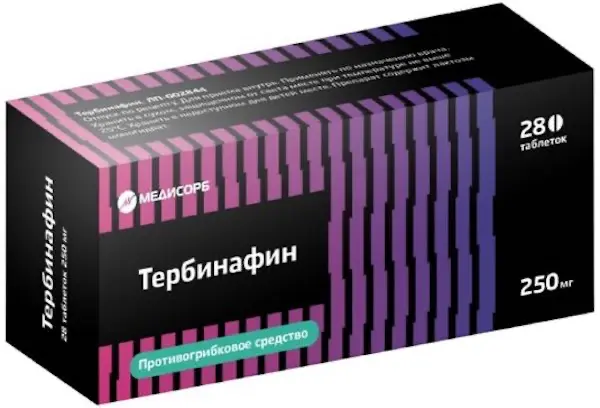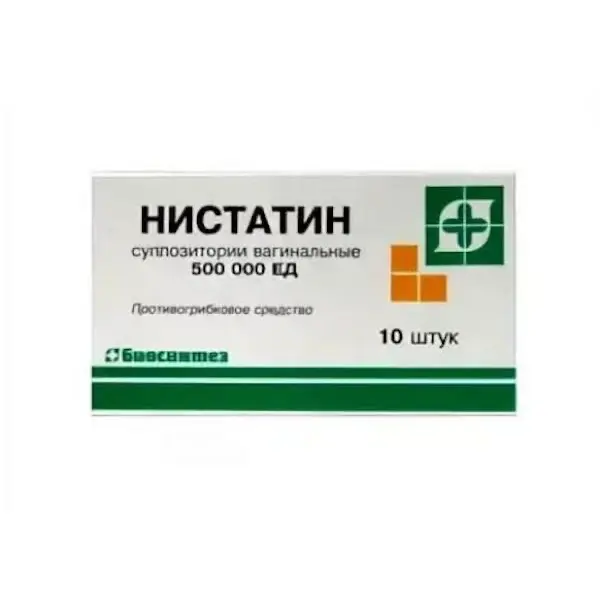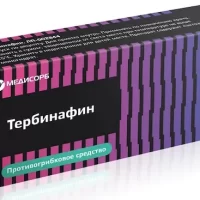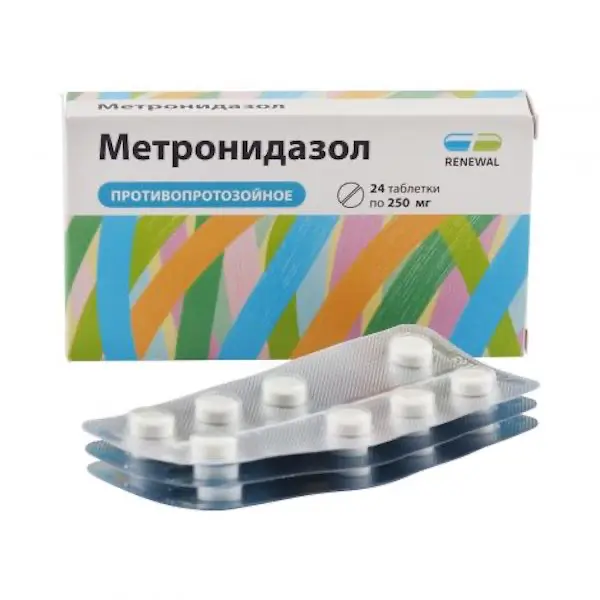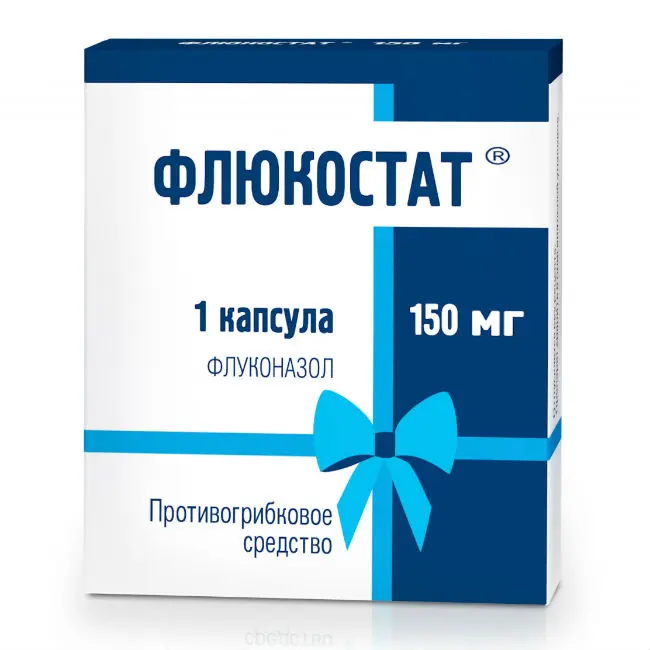Description
Terbinafine Pharmacodynamics
Terbinafine is an allylamine, which has a broad spectrum of action against fungi causing skin, hair and nail diseases, including dermatophytes (Trychophyton rubrum, Trychophyton mentagrophytes, Trychophyton vcrrucosum, Trychophyton violaceum, Trychophyton tonsurans, Microsporum canis, Epidermophyton floccosum), as well as yeast fungi of the genus Candida (such as C albicans) and Pityrosporum. In low concentrations terbipafin has fungicidal effect against dermatophytes, molds and some dimorphic fungi. Activity against yeast fungi, depending on their species, may be fungicidal or fungistatic.
Terbinafine, by inhibiting squalepepoxidase in the cell membrane of the fungus (not related to cytochrome P450 system), specifically inhibits the early stage of sterol synthesis in the fungus cell, which leads to ergosterol deficiency, intracellular squalene accumulation and death of the fungal cell.
When terbinafine is administered orally in the skin, hair and nails, concentrations of the drug are created to provide fungicidal action.
Indications
Mycoses caused by microorganisms sensitive to terbinafine:
– Onychomycosis caused by dermatophytes;
– Mycoses of the scalp;
– Fungal skin infections – treatment of dermatomycoses of the trunk, shins, feet, as well as yeast skin infections caused by fungi of the genus Candida (such as Candida albicans) – in cases where the localization, severity or extent of infection makes oral therapy appropriate.
Contraindications
– Hypersensitivity to terbinafine or to any other component of the drug;
– children under 3 years of age, body weight less than 20 kg (no data on use);
– severe, chronic or active liver disease;
– impaired renal function (creatinine clearance less than 50 ml/min or creatinine concentration in serum more than 300 µmol/l), since the drug administration in this category of patients has not been studied sufficiently;
– lactose intolerance, lactase deficiency and glucose-galactose malabsorption.
Caution:
If you have any of the above conditions, be sure to consult your physician before using the drug.
Caution should be exercised when using the drug in patients with liver dysfunction.
Caution should be exercised when using the drug in patients with bone marrow hematopoiesis suppression, cutaneous lupus erythematosus or systemic lupus erythematosus.
The drug should be used with caution in patients with such comorbidities as psoriasis or lupus erythematosus due to possible exacerbation of these diseases.
Dosage and administration
- The drug is taken orally, with a small amount of water, regardless of meals. It is desirable to take the drug at the same time. The duration of treatment depends on the indication and the severity of the disease.
- Adults
- 250 mg 1 time per day.
- Cutaneous infections
- Recommended duration of treatment: dermatomycosis of feet (interfinger, plantar or sock type) – 2-6 weeks; dermatomycosis of trunk, shins – 2-4 weeks; skin candidiasis – 2-4 weeks. Complete disappearance of infection manifestations and complaints associated with it may occur not earlier than a few weeks after mycological cure.
- Hair and scalp infections
- Recommended duration of treatment: Mycoses of the scalp – 4 weeks. Mycoses of the scalp occur mostly in children.
- Onychomycosis
- Duration of treatment is 6 to 12 weeks in most patients. For oichomycosis of the hands, 6 weeks of treatment are sufficient in most cases. For onychomycosis of the feet, 12 weeks of treatment is sufficient in most cases. Some patients who have a reduced nail growth rate may require longer treatment. The optimal clinical effect is seen several months after mycological cure and discontinuation of therapy. This is determined by the heem time period required for healthy nail growth.
- Administration in children
- No data on its application in children aged less than 3 years (body weight usually less than 12 kg) are available. It is not recommended to use in children with body weight less than 20 kg in view of impossibility of adequate dose adjustment. Administration in children aged 3 to 12 years old with body weight more than 20 kg is reasonable only in case when positive expected effect of therapy exceeds the potential risk of side effects development. The duration of treatment and doses depend on the body weight of the child. In children over 3 years old the drug is prescribed once a day. Recommended daily dose: for children with body weight of 20 to 40 kg – 125 mg (1/2 tablet 250 mg); over 40 kg – 250 mg.
- Administration in elderly patients
- There is no reason to believe that the drug dosage regimen should be changed for elderly patients or that they have side effects different from those in younger patients. In case of using the drug in this age group in tablets, the possibility of concomitant hepatic or renal dysfunction should be taken into account.

